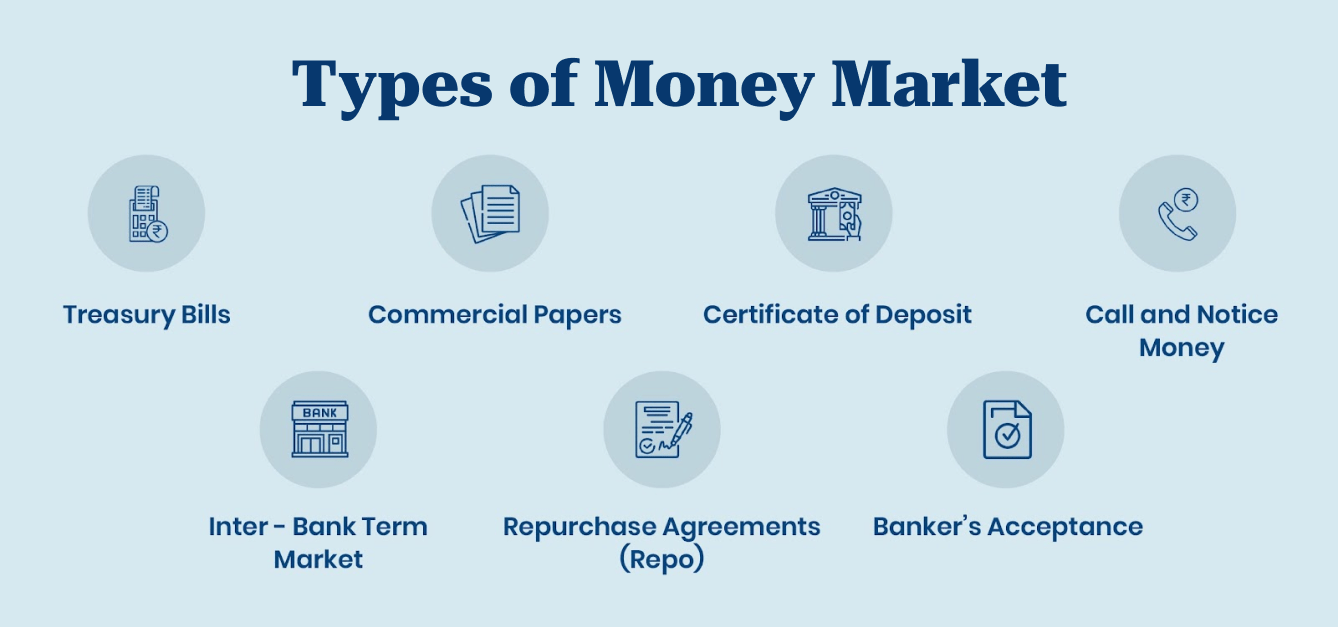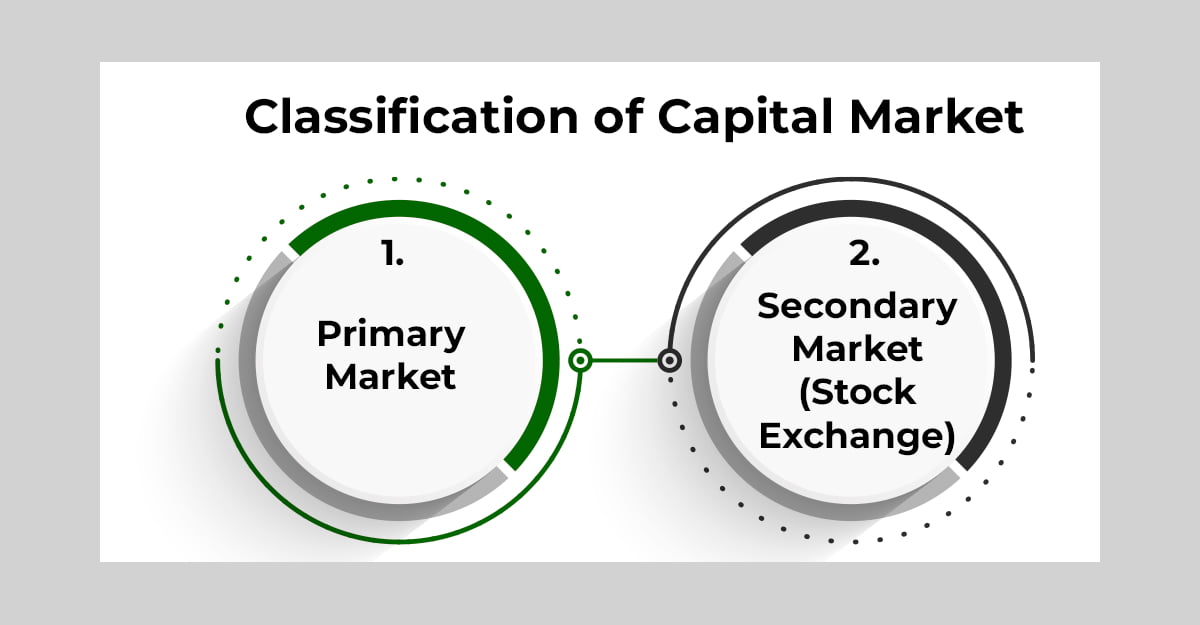As you know the significance of financial markets in fixing the price of assets for global trade. It is a marketplace where buyers and sellers interact to execute the trade in financial assets like bonds, commodities, derivatives, stocks, currencies, etc. Although there are many components of the global financial market system. But the two major components of the financial market are Money Market and Capital Market. Both of them play a crucial role in the development and growth of our economy. How? You may ask. By providing a platform where you can mobilize the funds with the aid of various operational characteristics.

In this article, you will get detailed information on the money market and capital market along with a comparative analysis. Let’s begin!
A Comparative Analysis of Money Market and Capital Market
In the following table, we have distinguished the money market and capital market based on numerous characteristic features.
| Characteristic Features | Money Market | Capital Market |
| Type of financial tool | Short-term financial tool(Lending and borrowing occur for up to one year) | Long-term financial tool(Lending and borrowing occur for more than one year) |
| Nature of the market | Informal in nature | Formal in nature |
| Types of instruments involved(Examples) | Commercial PapersTreasury CertificatesDeposit BillsTrade CreditPromissory NotesBill of Exchange | BondsStocksDebenturesEquity SharesPreference SharesAsset SecularizationRetained Earnings |
| Types of Investors or Institutions involved | Commercial BanksFinancial BanksCentral BankFinancial CompaniesChit FundsNon-financial Institutions | Stock BrokersInsurance CompaniesCommercial BanksUnderwritersMutual FundsIndividual InvestorsStock ExchangesInsurance Companies |
| Market Liquidity | High (Highly Liquid) | Low (Comparatively less liquid) |
| Maturity Period | Within one year | Longer than one year |
| Amount of Risk involved & Risk Factor | Low Risk (Because market liquidity is high and the maturity period is less than one year) | High Risk (Because market liquidity is low and the maturity period is longer than one year. Also, it lacks a stipulated time frame) |
| Prime Objective | To accomplish short-term credit needs of the business or trade. | To accomplish long-term credit needs of the business or trade. |
| ROI (Return on Investment) | Usually Low (due to short duration) | Usually High (due to long duration) |
| Role in Economy | Increase the liquidity of funds in the economy | Stabilizes the economy by increasing the long-term savings |
Money Market
As per the Reserve Bank of India, a “Money Market” is defined as a market where you can trade short-term financial assets.

In money markets, you trade for short-term debt securities with high liquidity and lower risks. In simple terms, it is a trade-in short-term debt. It allows you to borrow or lend money for a short duration, usually less than one year. Here, a constant flow of cash occurs among governments, corporations, banks, and financial institutions.
In the Money market, you can trade for various types of financial instruments like treasury bills, commercial paper, certificates of deposit, repurchase agreements, and short-term bonds issued by governments, corporations, and financial institutions.
Examples of Money Market
- Commercial Papers
- Treasury Certificates
- Deposit Bills
- Trade Credit
- Promissory Notes
- Bill of Exchange
How does the Money Market work?
The accounts you create on the money market work like other deposit accounts like saving accounts. When you deposit your funds in the money market account, you earn interest on those deposited funds. Here, the interests are compounded daily and paid to you on a monthly basis. The money you keep in such accounts is always accessible to you. You can draw it whenever you need without paying any withdrawal penalty.
The interest rates in the money market are determined by supply and demand. If the demand for money is high, interest rates will be high, and if the demand is low, interest rates will be low. The Federal Reserve Bank can also influence interest rates through monetary policy.
The participants of the money market include banks, corporations, government agencies, and other financial institutions.
Features of Money Market
- You can trade on short-term market funds.
- You will get a short maturity period that will last for less than one year.
- You can easily transform the assets of the trade into cash.
- You can make the transactions through mobile phone, email, or texts.
- You don’t need a broker for executing the transaction or trade.
Types of Money Market

- Treasury bills (T-bills): These are short-term debt instruments issued by the government to finance its short-term borrowing requirements. T-bills are highly liquid and are considered one of the safest investments. Because they carry zero risk. Since it is a risk-free instrument, it doesn’t give high or attractive returns. You will get three kinds of maturity periods with treasury bills i.e. 3-month, 6-month, and one year. Government issues the T-bills at a price that is less than their face value. You will earn the interest based on the maturity value and the buying price of the bill.
- Commercial Paper (CPs): Large and credit-worthy corporations issue this unsecured and short-term debt instrument. They issue it to meet their short-term financial needs directly from the market. It is considered a relatively safe instrument with higher returns than treasury bills. They are actively traded in the secondary market.
- Certificate of Deposits (CDs): Banks and other financial institutions offer Certificates of Deposits for large sums of money with a fixed rate of return. CDs function as deposit receipts for money that you deposit in a financial organization or bank. Also, FDIC (Federal Deposit Insurance Corporation) insures it up to a certain amount. You can freely negotiate the certificate of deposits.
- Repurchase Agreements (Repo): Financial institutions use the repos to raise short-term funds. Here, the banks sell the securities to a party with a promise to repurchase them later at a higher price. However, only those parties can carry out repurchase agreements that are approved by RBI.
- Money market mutual funds: These are mutual funds that invest in a variety of short-term debt securities, such as T-bills, commercial paper, and CDs. Money market mutual funds offer you and other investors a convenient way to invest in the money market. Here, you will get higher yields than traditional savings accounts.
- Banker’s Acceptance (BA): These are short-term credit instruments issued by a bank that guarantees payment to a seller of goods or services. In other words, it is a document that promises future payment. Bankers’ acceptance is commonly used in international trade transactions.
Significance of Money Market
The prime objective of the money market is to enable you to achieve the short-term credit requirements of your business. Because it offers a low-risk platform to invest in surplus funds or to raise funds at lower costs.
Do you know, it plays a crucial role in regulating the overall supply of money in an economy? Because they greatly influence short-term interest rates. This, in turn, affects the broader economy of a country.
Capital Market
Capital markets refer to financial markets where you can trade on long-term financial instruments such as stocks, bonds, and other securities. With capital markets, businesses, governments, and financial institutions can raise capital by issuing securities to investors.
As mentioned in the comparison table, you can use capital markets to finance long-term investments, such as infrastructure projects, research and development, and acquisitions. Companies can raise capital through the issuance of stocks or bonds, while governments can issue bonds to finance public projects. Quite interesting. Isn’t it? However, the capital market is full of unpredictable risks and has long maturity periods. Your investments may take over thirty years to mature! But don’t worry. Because despite the volatile values of assets, you will get enormous returns on Capital Market.
(Note: Stocks are considered to be riskier investments than bonds because their value can be volatile and unpredictable, while bonds offer a fixed rate of return.)
Examples of Capital Market
- Bonds
- Stocks
- Debentures
- Equity Shares
How does the capital market work?
The working or functioning of the capital market is based on the circular flow of money theory.
Step 1: Issuance of Securities
Here, the companies and governments issue securities like stocks, bonds, and other financial instruments to raise capital. These securities represent the ownership of the company. If you invest in it, you will get the opportunity to earn a return on these investments.
Step 2: Selling of securities in the primary market
The securities are first sold in the primary market, where the issuer receives the funds from the sale. Companies sell their securities in the primary market through IPO (Initial Public Offering) and Bond Offering for stocks and bonds respectively.
Step 3: Trading of securities in the secondary market
Once the securities are sold in the primary market, they can be traded in the secondary market. The secondary market is where investors can buy and sell securities among themselves. Here, you can buy or sell the securities of the company which increases the valuation and earnings of the company.
Features of Capital Market

- It links entrepreneurial borrowers and investors by routing money from the latter to the former.
- Capital Market mainly deals with medium to long-term investments.
- You will need agents or intermediaries to trade in the capital market. For example- brokers, underwriters, merchant bankers, sub-brokers, collection bankers, etc.
- The government controls this market with a set of rules and regulations.
- It deals with both commercial and non-commercial securities. Commercial securities are marketable and can be transferred (e.g. Shares & Debentures). Whereas you cannot transfer non-commercial or non-marketable securities (e.g. term deposits, loans, advances, etc.)
- It determines the rate of capital formation in our economy because it mobilizes funds. (Note: Capital formation refers to the net addition to the existing stock of the economy’s capital.)
- It provides opportunities to investors. Also, FII & DII, and non-residential Indians can invest in it.
- In the capital market, the whole trading process is simplified to reduce cost and time. Thus, it speeds up the entire trade.
Types of Capital Market

Fundamentally, Capital Market is classified into two types-
- Primary Markets– Here the companies sell their new bonds and stocks for the first time in public. It is also called the “New Issues Market” because businesses seek new ways of financing or capitalization. The new money is converted into debt or shares of the company but these are unlocked only after they are repurchased by the company in the secondary market. It mainly trades on two major financial instruments i.e., stocks (equities) and debts. This can be done through an initial public offering (IPO) for stocks, or a bond offering for bonds.
- Secondary Markets– Here, the investors trade on old debt or stocks i.e. they are already issued. It allows you to sell the old stock in case you do not want it anymore. As a consequence, it leads to the “liquidation” of these stocks. Finally, you can have cash instead of an asset. You can use the cash either to invest in another stock or for personal consumption. Examples of secondary markets are- NSE (National Stock Exchange), BSE (Bombay Stock Exchange), NYSE (New York Stock Exchange), etc.
Significance of Capital Market
Investors in the capital market can include individuals, institutional investors such as pension funds, insurance companies, mutual funds, and foreign investors. The capital market plays a vital role in the global economy by providing a means of financing for businesses and governments and facilitating economic growth.
Conclusion
As you have learned so far, the money market and capital market are distinct segments of the global financial system. Each has its own unique characteristics and functions. The differences between the money market and capital market are based on the duration of the maturity period, the number of risks involved, the types of financial instruments involved, etc. Both of them play crucial roles in the overall economy of the nation.
Money markets help to ensure the efficient allocation of short-term capital by providing a platform for financial institutions to lend and borrow funds on a short-term basis.
On the other hand, the Capital markets provide a mechanism for companies and other entities to raise long-term capital to finance growth and expansion. Additionally, capital markets provide individual and institutional investors with opportunities to earn high returns on their investments with some risks. Thus, these two markets can help to stimulate overall economic growth and development.

